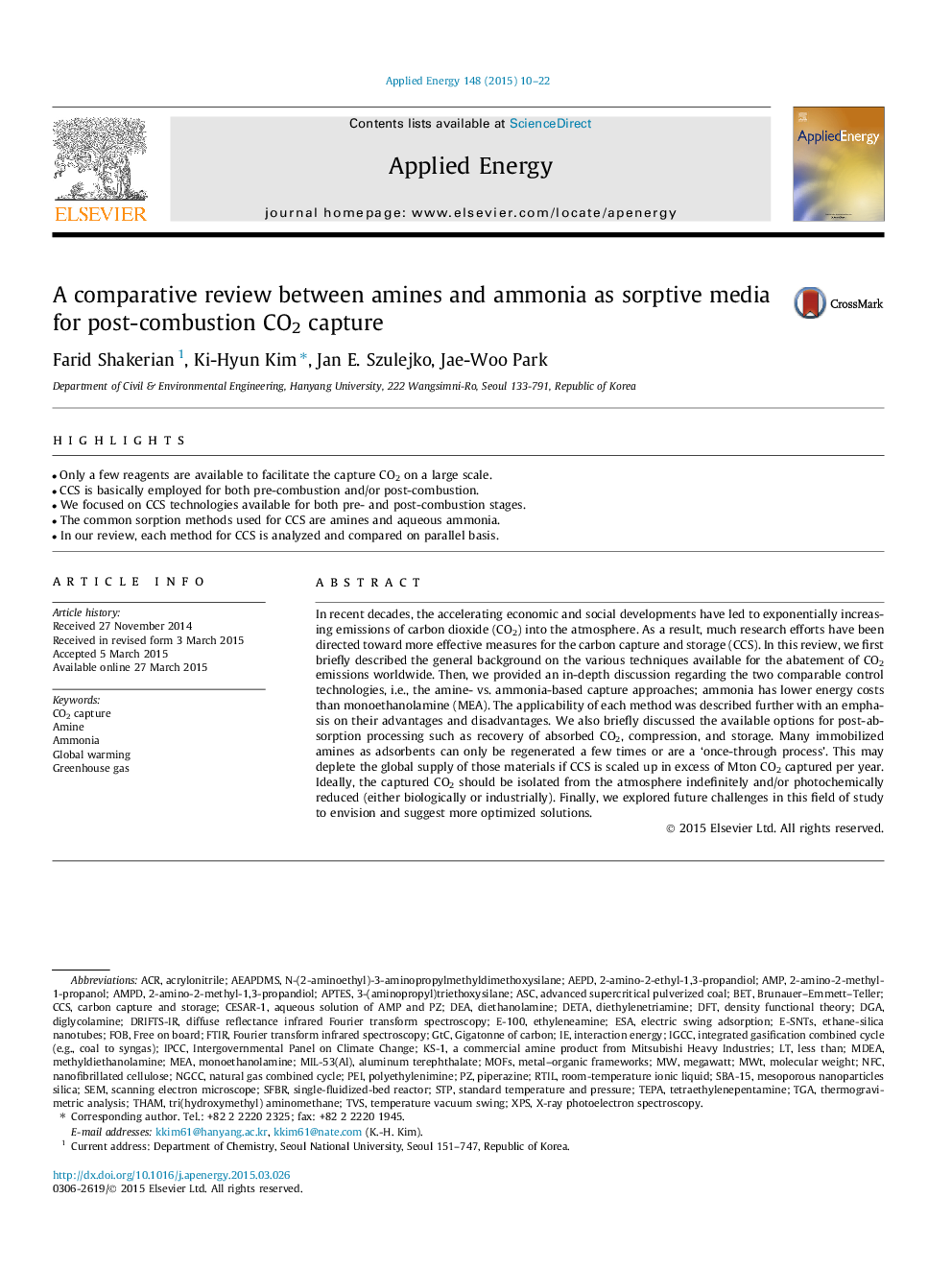| Article ID | Journal | Published Year | Pages | File Type |
|---|---|---|---|---|
| 6687231 | Applied Energy | 2015 | 13 Pages |
Abstract
In recent decades, the accelerating economic and social developments have led to exponentially increasing emissions of carbon dioxide (CO2) into the atmosphere. As a result, much research efforts have been directed toward more effective measures for the carbon capture and storage (CCS). In this review, we first briefly described the general background on the various techniques available for the abatement of CO2 emissions worldwide. Then, we provided an in-depth discussion regarding the two comparable control technologies, i.e., the amine- vs. ammonia-based capture approaches; ammonia has lower energy costs than monoethanolamine (MEA). The applicability of each method was described further with an emphasis on their advantages and disadvantages. We also briefly discussed the available options for post-absorption processing such as recovery of absorbed CO2, compression, and storage. Many immobilized amines as adsorbents can only be regenerated a few times or are a 'once-through process'. This may deplete the global supply of those materials if CCS is scaled up in excess of Mton CO2 captured per year. Ideally, the captured CO2 should be isolated from the atmosphere indefinitely and/or photochemically reduced (either biologically or industrially). Finally, we explored future challenges in this field of study to envision and suggest more optimized solutions.
Keywords
ESAThAMFOBIGCCDGAMDEATVSNGCCDEAACRampDAMPNFCIPCCMWTGTCSBA-15TEPAASCMEAPEICCSRTILfree on boardDiglycolamineDETA3-(aminopropyl)triethoxysilaneTGA2-amino-2-methyl-1-propanolBrunauer–Emmett–TellerDFTMIL-53(Al)MOFsSTPTetraethylenepentamineAmmoniaAmineDiffuse Reflectance Infrared Fourier Transform SpectroscopyInteraction energyAcrylonitrileThermogravimetric analysisElectric Swing AdsorptionCarbon capture and storageCO2 capturestandard temperature and pressurediethanolamineDiethylenetriamineNanofibrillated celluloseBETFTIRX-ray photoelectron spectroscopyFourier transform infrared spectroscopyXPSmetal–organic frameworksroom-temperature ionic liquidmethyldiethanolamineSEMAPTESMonoethanolaminemegawattscanning electron microscopeDensity functional theoryIntergovernmental Panel on Climate ChangeMolecular weightPolyethyleniminePiperazinenatural gas combined cycleGreenhouse gasGlobal warming
Related Topics
Physical Sciences and Engineering
Energy
Energy Engineering and Power Technology
Authors
Farid Shakerian, Ki-Hyun Kim, Jan E. Szulejko, Jae-Woo Park,
